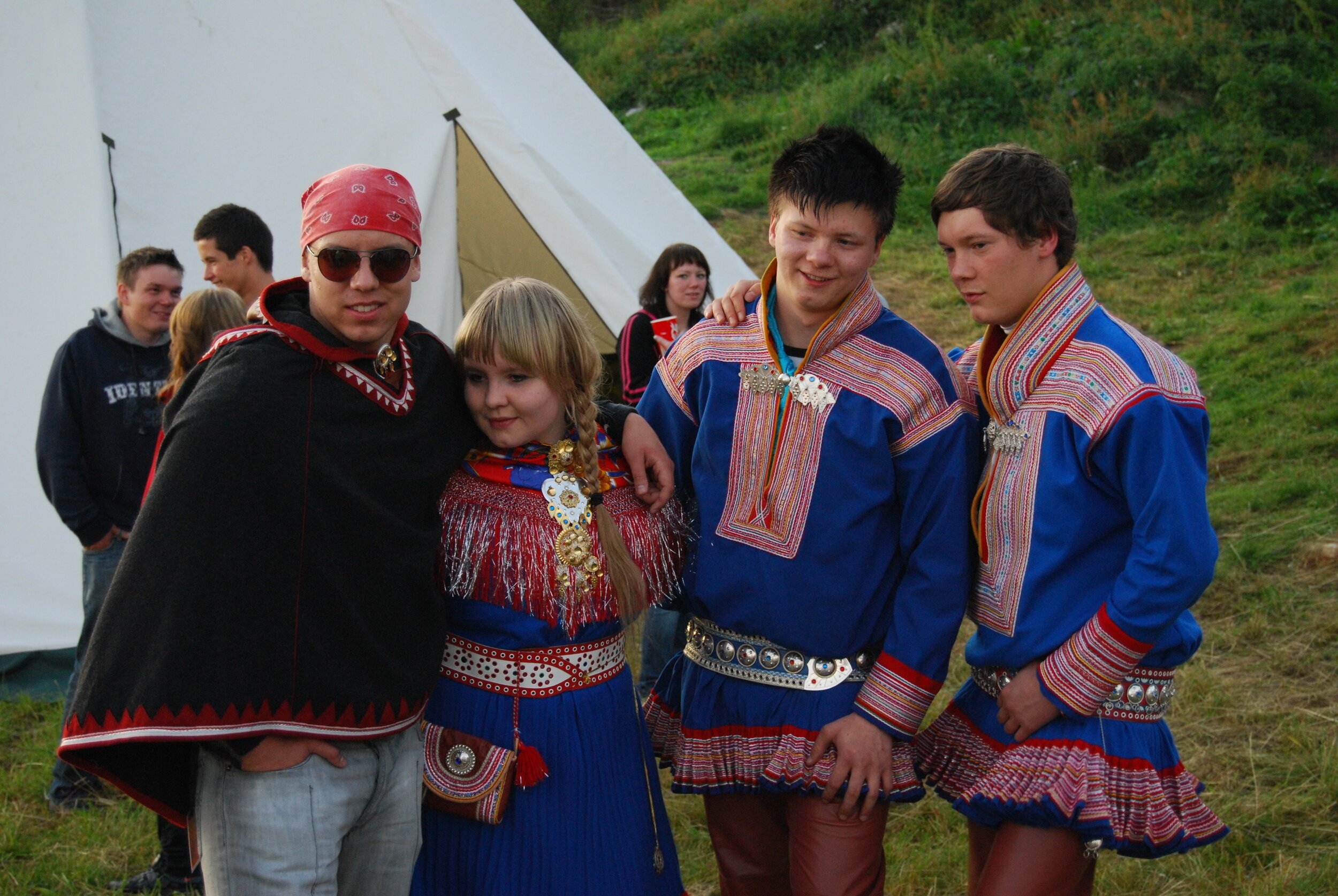WHAT IS GÁKTI?
The photo shows members of the band Duolva Duottar at a music festival in 2008 in Norway. The three performers on the right are wearing gákti; the performer on the left a luhkka. Credit: Petr Brož (CC BY-SA 3.0).
Gákti – or Gáppte, Gapta, Gápptie, Gaeptie, Gåptoe, Mäccak, Mááccuh, Määccaǩ, Mácēh, kofta, kolt, kofte or takki – is the traditional Sámi clothing (not “costume” or “regalia,” as those terms have connotations not applicable to gákti). It is an important marker of Sámi identity and community, and reserved for those living the culture.
The following information comes from samer.se (translated from Swedish and edited):
The gákti is an important cohesive identity symbol and it has a particularly great significance in festive contexts. At baptisms, funerals, weddings, confirmations and other solemn occasions, many Sami wear gákti. As gákti designs were passed down in families and communities, a knowledgeable Sámi would be able to tell at a glance where an individual was from simply by the style of their gákti. If you photograph someone in gákti, record the region and family the design comes from, if possible, to include when you share your photograph. In that way you can help pass on and preserve the legacy of these deeply important designs.
The appearance of the clothing varies between different areas in Sápmi. In addition, the basic shape and cut of the gákti differs depending on the gender presentation and in some areas also depending on the wearer’s age and marital status. Some examples are that the traditionally male gákti is shorter than the female gákti and that the gákti tends to be longer in southern Sápmi than further north. Like other clothes, the look of the gákti varies in part with fashion. The creator’s own imagination can also give individuality to the gákti in color, decor and ribbon pattern. Check out #gakti on Instagram for a plethora of styles both traditional and modern.
In the past, most clothes were made in homes. The basic material came from the reindeer and other fur animals, and both clothes and shoes were made from fur, skins and tendons. Calfskin and cloth of cotton and wool, as well as yarn for ribbon weaving, were bought from merchants. Today, gákti are still made from cloth and calfskin, but often materials such as silk, velvet, denim, and various synthetic blends are used. Modern creators often twist or update one or more elements of gákti, playing with shape and pattern and material to express their unique modern Sámi identity.
This photograph from 1884 showing a Sámi man in gákti was colorized by Julius Jääskeläinen, shared under (CC BY 2.0).
The Sami gákti traditionally includes a belt, shoes and shoebands as well as a liidni (shawl of silk or wool). In addition, accessories such as high collars, jewelry, gloves, pants, and hats are often used.
If you wish to wear an item of Sámi clothing, consider the luhkka. A highly functional version of a poncho, it keeps the wearer dry and warm in most inclement weather, while details of decoration express personality. The luhkka is not considered to have the same protected elements of unique heritage as the gákti, and you can purchase or make one adapted to your home climate. An example of a luhkka can be seen on the left of the foreground group in the banner photo above. Below is a YouTube video sharing research about the Sámi and showing the creation of a luhkka (by a non-Sámi person for a Sámi friend).

